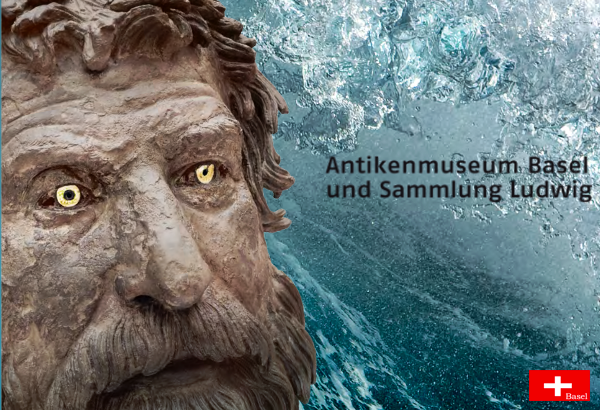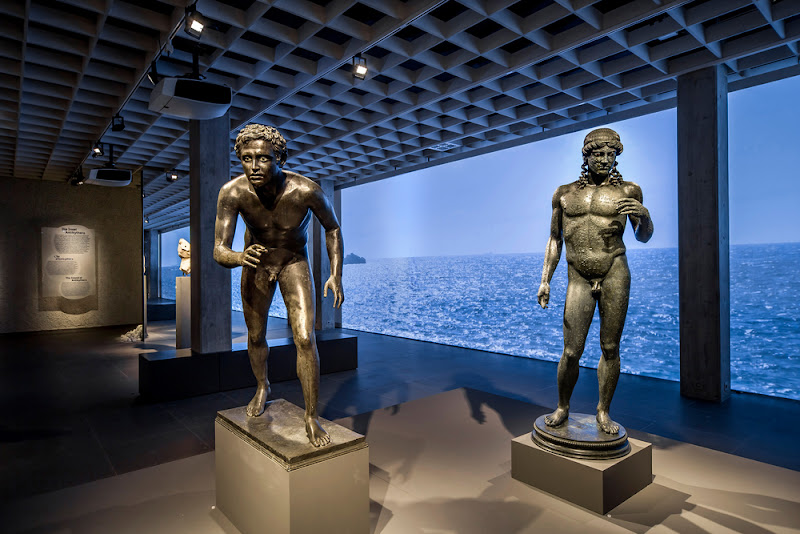More than 2,000 years ago a large cargo ship sank on its way from Greece to Italy. It was carrying wonderful works of art and a mysterious machine with several gears. Discovered by sponge divers in 1900, the wreck and its treasure have been studied ever since. The finds are now being put on display for the first time outside of Greece – in the Museum of Ancient Art in Basel.

The exhibition “The sunken treasure. The Antikythera shipwreck” shown in the Basel Museum of Ancient Art tells the story of the most important ancient shipwreck ever found.
This was a cargo ship on its way from the eastern Mediterranean to Roman Italy in the 1st century BC.
It was carrying magnificent marble and bronze statues, coins, luxurious glass vessels, jewellery, furniture, large amounts of pottery and an astronomical instrument, the so-called Antikythera mechanism.
The luxury goods were intended for the Italian aristocracy who used them to adorn their gardens and villas.
In contrast to thousands of other ships which did actually reach their destinations in the Gulf of Naples, the Antikythera ship sank off the island of the same name between Crete and the Peloponnese around 70 BC, probably during a storm.



Shortly before Easter 1900 sponge divers from the Greek Island of Symi discovered the shipwreck and parts of its cargo at a depth of over 40 metres off the coast of Antikythera.
The first artefact to be raised to the surface by a diver was the right arm of an over-life-sized bronze statue.
Several examinations were subsequently carried out with the help of the Greek Navy. In 1976 Jacques-Yves Cousteau, who had dived on the wreck in 1953, made his research vessel Calypso available, which allowed researchers to recover a further series of precious artefacts from the wreck site.
Since October 2014 the Greek Ephorate for Underwater Antiquities has been carrying out new underwater research on the wreck in collaboration with the American Woods Hole Oceanographic Institution and with support from Hublot S.A.
The exhibition in Basel Thanks to close relations between the National Archaeological Museum in Athens and the Basel Museum of Ancient Art under Director Andrea Bignasca, we are now able to present the sensational finds from Antikythera to audiences outside of Greece.
The original works from Greece are being shown together with objects from important museums in Italy. The special exhibition was staged by the Paris Studio Adeline Rispal.
The exhibition kicks off on 27th September 2015 and will run until to 27th March 2016.
For more information about the exhibition see here
Source: Antikenmuseum Basel [September 27, 2015]